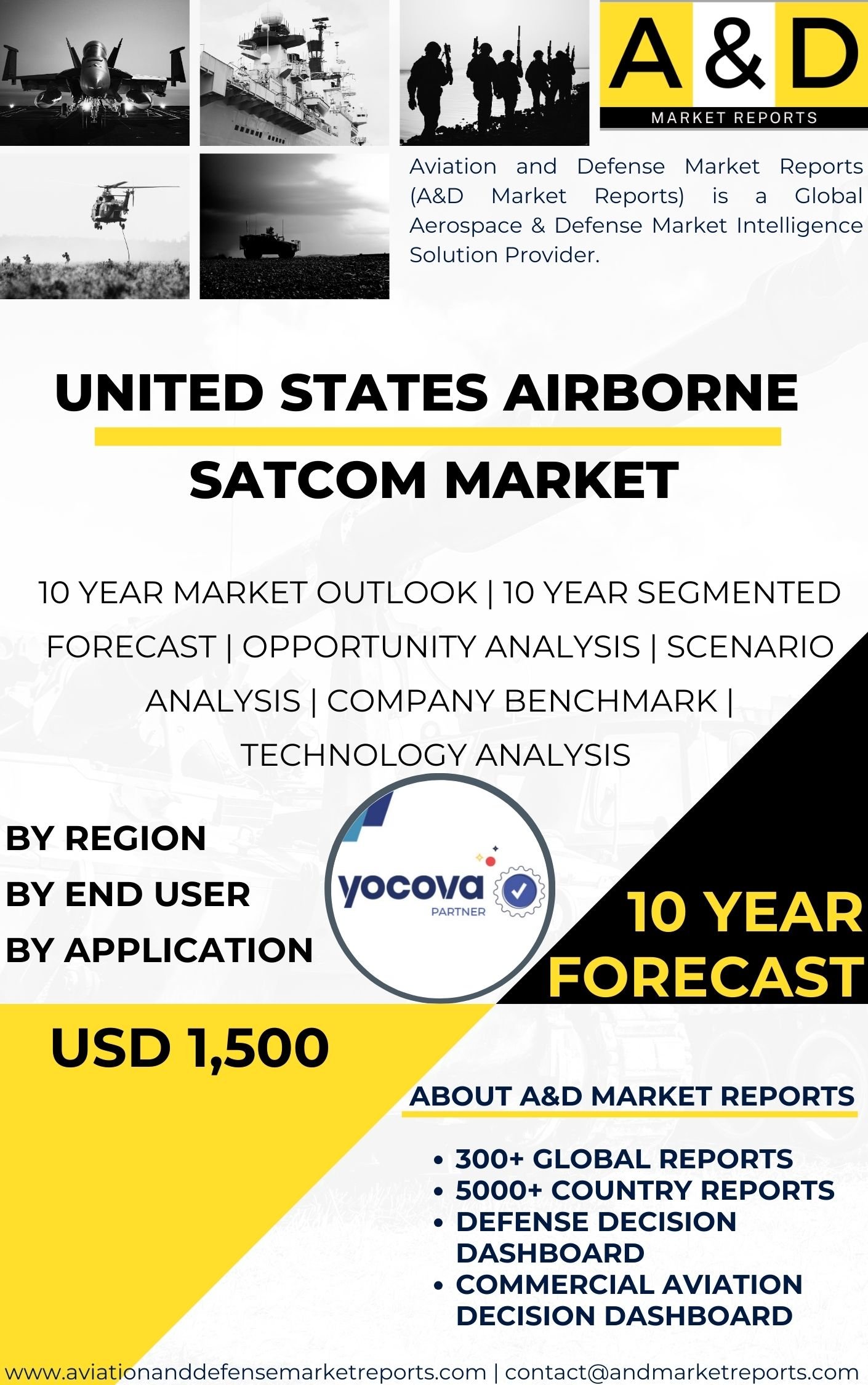Description
United States Airborne SATCOM Market
The United States Airborne SATCOM market represents a dynamic and rapidly evolving industry, driven by the increasing demand for seamless and secure communication links in various airborne platforms. SATCOM technology has become an essential enabler for both commercial and military aviation, providing high-speed data transmission, voice communication, and internet connectivity while in flight. This article will explore the current state of the U.S. Airborne SATCOM market, its key players, market trends, and the factors influencing its growth.
The U.S. Airborne SATCOM market is characterized by a diverse range of applications, including commercial aviation, business aviation, military aircraft, unmanned aerial systems (UAS), and government and defense operations. Each segment has unique requirements and demands, driving innovation and competition among SATCOM providers.
Commercial aviation is a significant driver of the U.S. Airborne SATCOM market. Airlines are increasingly investing in SATCOM systems to offer in-flight internet access and connectivity services to passengers. In-flight Wi-Fi has become a sought-after amenity, and passengers now expect to stay connected and productive during their flights. To meet this demand, airlines are adopting various SATCOM solutions, from traditional geostationary satellite systems to new low Earth orbit (LEO) satellite constellations.
Business aviation is another key segment of the U.S. Airborne SATCOM market. Corporate jets and private aircraft are equipped with SATCOM capabilities to provide executives and business travelers with seamless connectivity during their flights. Business aviation users require secure and reliable communication links for confidential communications and access to business-critical applications.
The military and defense sector is a significant user of Airborne SATCOM technology. Military aircraft require secure and resilient communication links to support command and control, intelligence, surveillance, reconnaissance, and other critical missions. The U.S. Department of Defense (DoD) invests in advanced SATCOM systems to ensure continuous and encrypted communication between airborne platforms and ground-based networks.
Unmanned aerial systems (UAS), or drones, are rapidly adopting Airborne SATCOM to enable beyond visual line of sight (BVLOS) operations and support long-range missions. SATCOM connectivity allows operators to control and receive data from drones operating over extended distances and remote locations. The growing applications of drones in various industries, such as agriculture, environmental monitoring, and infrastructure inspection, are driving the demand for Airborne SATCOM in this segment.
The U.S. Airborne SATCOM market is highly competitive, with various companies vying for market share. Key players in the industry include major satellite operators, satellite manufacturers, avionics companies, and service providers.
Satellite operators such as Intelsat, SES, Inmarsat, and Viasat play a crucial role in the Airborne SATCOM market by providing satellite capacity and coverage. These companies operate a fleet of satellites in geostationary orbit (GEO) and low Earth orbit (LEO), ensuring global coverage and supporting a wide range of airborne communication needs.
Satellite manufacturers, such as Boeing, Lockheed Martin, and Airbus, are involved in the development and production of advanced satellites designed to meet the specific requirements of Airborne SATCOM applications. Their focus on increasing satellite capacity, improving coverage, and reducing latency contributes to the growth of the Airborne SATCOM market.
Avionics companies like Collins Aerospace, Honeywell, and L3Harris Technologies specialize in the design and manufacturing of airborne communication systems and SATCOM terminals. Their expertise lies in developing lightweight, compact, and high-performance terminals to meet the stringent requirements of airborne platforms.
Service providers, such as Gogo, Global Eagle, and ViaSat, offer end-to-end Airborne SATCOM solutions to commercial airlines, business aviation operators, and government and defense agencies. These providers offer a range of connectivity packages, including broadband internet, voice communication, entertainment content, and cybersecurity services.
The U.S. Airborne SATCOM market is witnessing several trends that are shaping its growth and direction. One such trend is the increasing adoption of Ka-band and Ku-band SATCOM systems in commercial aviation. These frequency bands offer higher data rates and improved performance, enhancing the in-flight connectivity experience for passengers.
Another trend is the emergence of LEO satellite constellations in the Airborne SATCOM market. Companies like SpaceX (Starlink), OneWeb, and Amazon (Project Kuiper) are deploying large constellations of low Earth orbit satellites to provide global coverage and low-latency communication services. The advent of LEO constellations is expected to bring significant benefits to Airborne SATCOM, including reduced latency and enhanced reliability.
The U.S. military is also exploring the use of protected SATCOM systems to ensure secure communication in contested environments. Protected SATCOM technologies utilize advanced encryption and anti-jamming capabilities to safeguard sensitive information from unauthorized access and electronic warfare threats.
Regulatory developments and international agreements also influence the U.S. Airborne SATCOM market. For instance, the Federal Communications Commission (FCC) plays a vital role in regulating satellite communication services and spectrum allocation in the United States.
The growth of Airborne SATCOM in the U.S. is further driven by advancements in antenna technology, satellite miniaturization, and software-defined networking (SDN). These advancements allow for more efficient and versatile SATCOM solutions, catering to the diverse needs of airborne platforms.
In conclusion, the U.S. Airborne SATCOM market is a dynamic and competitive industry, catering to the communication needs of commercial and military aviation, business jets, drones, and other airborne platforms. The increasing demand for in-flight connectivity, data transmission, and secure communication drives the adoption of advanced SATCOM solutions. As technology continues to evolve and new satellite constellations are deployed, the Airborne SATCOM market will experience further innovation and growth, enhancing connectivity and supporting critical operations in the skies.




